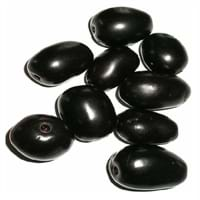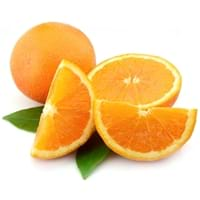Health Benefits
Cancer prevention, Heart care, Increase in haemoglobin, Regulates Blood Sugar, Ulcer prevention
Arthritis treatment, Cancer prevention, Heart care
General Benefits
Boosts immune system, Digestive aid, Fights against infections, Strengthens bones
Anti-inflammatory properties, Cures cough, Cures fever, Digestive aid, Healing of wounds, Maintains healthy cholesterol level
Skin Benefits
Brightens and lightens complexion, Skin cleansing, Skin rejuvenation, Treatment of acne, Treatment of dark spots
Anti-aging benefits, Brightens and lightens complexion, Reduces wrinkles, Treatment of dark spots
Hair Benefits
Promotes longer and healthier hair, Protects hair
Promotes longer and healthier hair, Protects hair, Rejuvenates scalp, Shiny hair
Allergy Symptoms
Abdominal pains, NA
Abdominal cramps, Hives, Itching, Nausea, Wheezing
Side Effects
Decrease in blood sugar levels, Allergic reaction, Throat irritation, Throat swelling, Possibly unsafe during pregnancy
Allergic reaction, Skin rash, Possibly unsafe during pregnancy
Best Time to Eat
As a snack in the late afternoon, Don't consume at night and before bed, Eat the fresh ones, avoid mixing with any other foods, don't eat after meal., Morning time (before lunch), Strictly avoid empty stomach
As a snack in the late afternoon, Eat the fresh ones, avoid mixing with any other foods, don't eat after meal., Morning time (before lunch), Strictly avoid empty stomach
Vitamin B5 (Pantothenic Acid)
Not Available
Vitamin B9 (Folic acid)
Not Available
Vitamin C (Ascorbic Acid)
Vitamin E (Tocopherole)
Not Available
Vitamin K (Phyllochinone)
Not Available
Lutein+Zeaxanthin
Not Available
Phytosterol
Not Available
Calories in Fresh Fruit with Peel
Not Available
Calories in Fresh Fruit without Peel
Not Available
Calories in Frozen Form
Not Available
Not Available
Calories in Dried Form
Not Available
Calories in Canned Form
Not Available
Type
Tree fruit, Tropical
Citrus
Season
Monsoon, Summer
Winter
Varieties
Ram Jarnun and Paras
Clementine, Dancy, King Mandarin, Murcott, Ponkan, Robinson, Satsuma and Sunburst
Color
Black, Magenta, Purple
Orange
Inside Color
Purple
Orange
Taste
Astringent, Sweet
Sweet-Sour
Origin
Bangladesh, India, Indonesia, Malaysia, Nepal, Pakistan, Philippines, Sri Lanka
South-Eastern Asia
Grows on
Trees
Not Available
Soil Type
Loam, Sandy loam, Well-drained
Well-drained
Climatic Conditions
Humid, Rainfall
Sunny
Facts about
- Wood of jambul tree is water-resistant wood & is used in railroads and to implement engines in the well.
- In Indian mythology, it is said that Jambul fruit was revered by Buddha.
- Jambul has a huge importance in Ayurveda.
- It is known by another name ' Mandarin'.
- Oil extracted from its peel is used in various skin and hair care products.
- Tangerines is also known as the ‘Christmas Orange’ because it is used to stuff kids' stockings..
Cocktails
Yes
Not Available
Other Countries
Bangladesh, Indonesia, Malaysia, Nepal, Pakistan, Philippines, Sri Lanka
Brazil, Iran, Italy, Japan, Korea, Morocco, Spain, Turkey
Top Importer
Not Available
China
Botanical Name
Syzygium cumini
Citrus reticulata
Synonym
Eugenia cumini
Citrus clementina or Citrus nobilis
Subkingdom
Tracheobionta
Tracheobionta
Division
Magnoliophyta
Magnoliophyta
Class
Magnoliopsida
Magnoliopsida
Order
Myrtales
Sapindales
Family
Myrtaceae
Rutaceae
Species
S. cumini
C. reticulata
Generic Group
Not Available
Citrus fruit
Difference Between Jambul and Tangerine
We might think that Jambul and Tangerine are similar with respect to nutritional value and health benefits. But the nutrient content of both fruits is different. Jambul and Tangerine Facts such as their taste, shape, color, and size are also distinct. The difference between Jambul and Tangerine is explained here.
The amount of calories in 100 gm of fresh Jambul and Tangerine with peel is 60.00 kcal and Not Available and the amount of calories without peel is Not Available and 53.00 kcal respectively. Thus, Jambul and Tangerine belong to Low Calorie Fruits and Low Calorie Fruits category.These fruits might or might not differ with respect to their scientific classification. The order of Jambul and Tangerine is Myrtales and Sapindales respectively. Jambul belongs to Myrtaceae family and Tangerine belongs to Rutaceae family. Jambul belongs to Syzygium genus of S. cumini species and Tangerine belongs to Citrus genus of C. reticulata species. Beings plants, both fruits belong to Plantae Kingdom.









